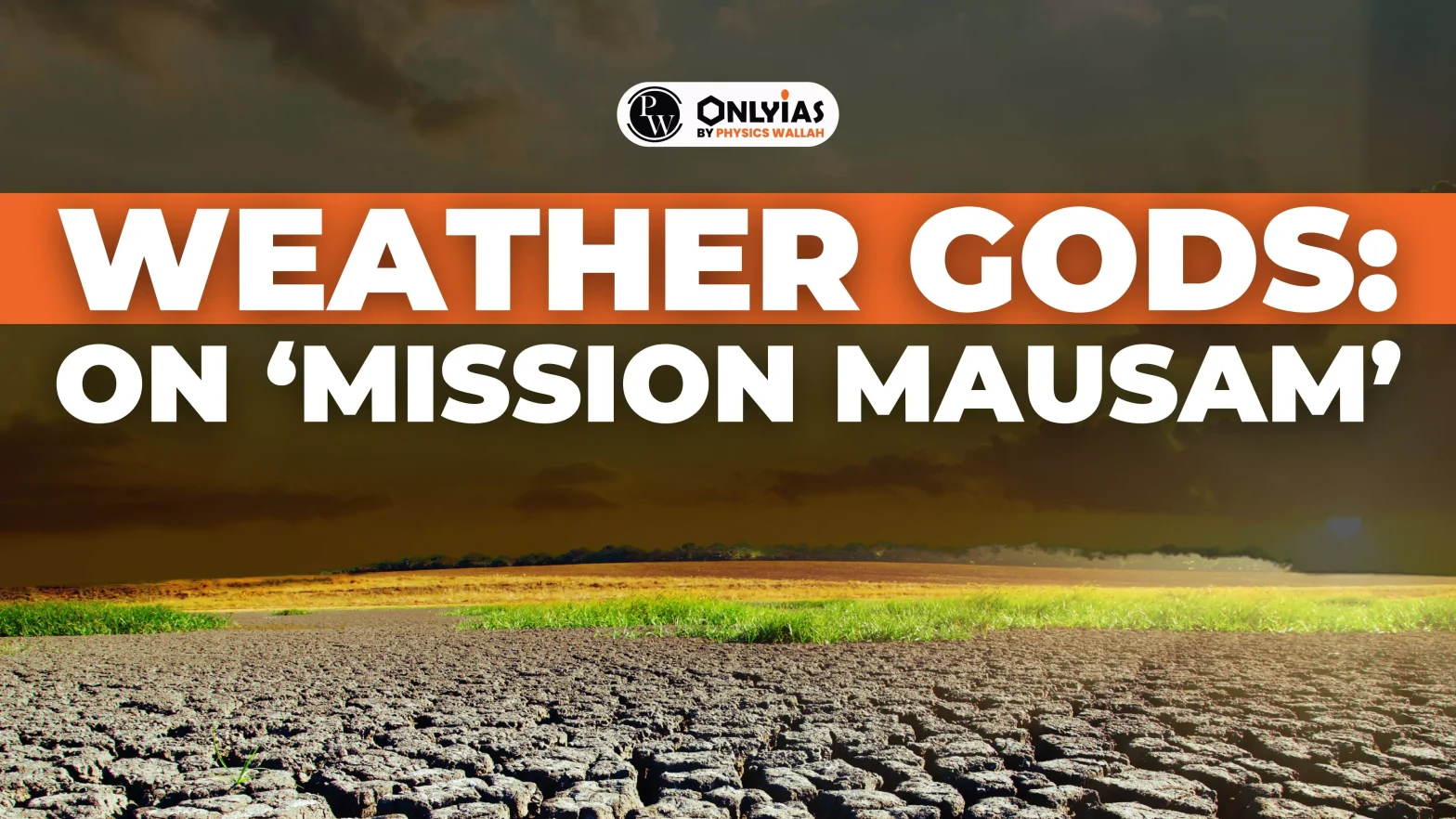On 11 September 2024, the Union Cabinet approved the ₹2,000 crore Mission Mausam over two years, which focuses on significantly upgrading the equipment used by key organisations like the India Meteorological Department, the National Centre for Medium Range Weather Forecasting, and the Indian Institute of Tropical Meteorology. These organisations form the backbone of India’s weather and climate forecasting capabilities across various time scales.
What is Mission Mausam?
This is slightly different from the National Monsoon Mission, launched in 2012 developed state-of-the-art weather and climate prediction models through intensive computing.
- Nodal Ministry: Mission Mausam is to be chiefly implemented by the Ministry of Earth Sciences (MoES).
- Aim: Mission Mausam’s objective is to enhance India’s ability to predict and respond to extreme weather events and the impacts of climate change.
- Its focus will be on improving observations and understanding to deliver highly-accurate and timely weather and climate information across temporal and spatial scales.
- Instruments: MoES will install 60 weather radars, 15 wind profilers and 15 radiosondes.
- Weather Radars: It is like a dish-antenna that transmits radio waves and would detect rainfalls, snowstorm and other weather phenomena..
- Wind Profilers: It is a special radar that measures wind speed at different heights. It helps in better prediction. It is used by pilots as well.
- Radiosondes: It is a small device attached to a balloon. It is used to measure temperature, pressure, and humidity.
- Cloud-Simulation Chamber: It will be set up in IITM where scientists would work on artificial clouds.
- Cloud-seeding: Cloud seeding is a kind of a weather modification technology to create artificial rainfall. It works only when there are enough pre-existing clouds in the atmosphere.
Enroll now for UPSC Online Course
| Maharashtra and Cloud-Seeding: Based on IMD forecast in April 2015, the Government of Maharashtra took a note of deficit rainfall forecast and planned cloud seeding experiment. |
- Control Lighting: There are also plans to control lightning.
- In India, lightning strikes are the number one cause of nature-propelled deaths, above floods and landslides. Due to this the scientists are hoping to tweak the electrical characteristics of the cloud so that there are fewer lightning strikes.
- Benefits: This will help in detecting accurate weather conditions which will further help during eviction during disasters.
- This will also give a boost to solar and wind energy due to better detection thus improving daily lives.
- Challenges and Ethical Concerns: Weather is a natural phenomenon which cannot always be predicted 100 percent.
- Long Term Impact: The mission aims for cloud-seeding which is weather modification or changing the characteristics of clouds.
- This could have negative aspects as well. One place might have heavy rainfall and other places would have low rainfall. This would further deepen the conflict between states over water-sharing.
- Ethical Concerns: At the same time it raises ethical concerns because at the end of the day humans are interfering with how nature works.
Check Out UPSC Modules From PW Store
Conclusion
Mission Mausam represents a significant investment in India’s weather forecasting capabilities, and also underscores the complexities and uncertainties inherent in weather modification. The initiative’s ambitious goals, such as cloud simulation and lightning control, highlight the potential for groundbreaking advancements. However, the success of these efforts will depend on continued research and technological innovation.
![]() 14 Sep 2024
14 Sep 2024

